uc³ – URBAN CORK
Community Pavilion
Circular Design
University Group Project
(C. Bernades, M. Kiessig, R. Vereniūtė)
2021
Circular Design
University Group Project
(C. Bernades, M. Kiessig, R. Vereniūtė)
2021
Imagine a blooming pavilion in the heart of a city …
A pavilion where people, birds and insects can live together in harmony and benefit from each other.
A natural pavilion–soft to touch, sweet to smell, warm to feel. A place where you can calm down all your senses and take a deep breath to relax …
A circular pavilion with a closed-loop system where all materials can be regenerated, restored or reused.
The project, with predefined dimensions and a limited choice of materials, involves a concept of materiality that is intended to be fully sustainable and part of a circular building process. The main "ingredient" here is recycled cork granulate.
A pavilion where people, birds and insects can live together in harmony and benefit from each other.
A natural pavilion–soft to touch, sweet to smell, warm to feel. A place where you can calm down all your senses and take a deep breath to relax …
A circular pavilion with a closed-loop system where all materials can be regenerated, restored or reused.
The project, with predefined dimensions and a limited choice of materials, involves a concept of materiality that is intended to be fully sustainable and part of a circular building process. The main "ingredient" here is recycled cork granulate.
Material tests with cork granulate and
various binders & pressing methods.
various binders & pressing methods.

The cork pavilion is an addition to the CRCLR House in
Berlin-Neukölln on the areal of the Rollberg brewery.
| Rhino, Adobe Photoshop, Procreate
Berlin-Neukölln on the areal of the Rollberg brewery.
| Rhino, Adobe Photoshop, Procreate
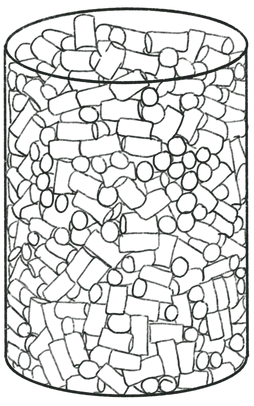
1.2 billion cork stoppers accumu-lated every year in Germany

Only 140 million (11.6%) get recycled
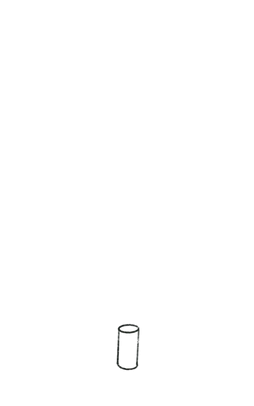
1.3 million (0.11%) needed for the uc³
Cork has an incredible number of advantages: it is lightweight, impermeable, fire retardant, heat, sound and
vibration insulating, renewable, recyclable, reusable, and biodegradable.
While the production of cork products, also for architecture and interior design, is increasing, the largest amount is still found in bottle corks, which are a huge untapped source of recyclable material. The biggest challenge is to find an equally fully biodegradable binder, as only freshly harvested and processed cork produces its own binding resin. For already processed cork products that have been ground up, new binders have to be added. This project involved a small series of tests on grinding, binding and pressing cork.
While the production of cork products, also for architecture and interior design, is increasing, the largest amount is still found in bottle corks, which are a huge untapped source of recyclable material. The biggest challenge is to find an equally fully biodegradable binder, as only freshly harvested and processed cork produces its own binding resin. For already processed cork products that have been ground up, new binders have to be added. This project involved a small series of tests on grinding, binding and pressing cork.

Material tests with cork granulate and various binders & pressing methods. | Rice-Glue, Flour-Starch, Gelatine-Glycerin,
Gelatine-Milk, Joint Filler, GreenPoxy
Gelatine-Milk, Joint Filler, GreenPoxy
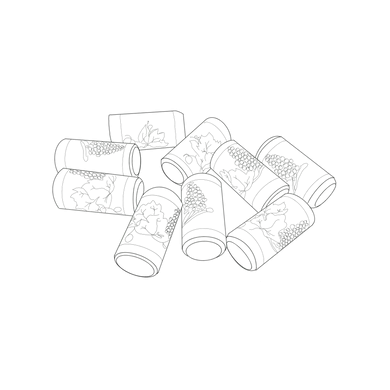
I
cork stopper
collection & sorting
cork stopper
collection & sorting
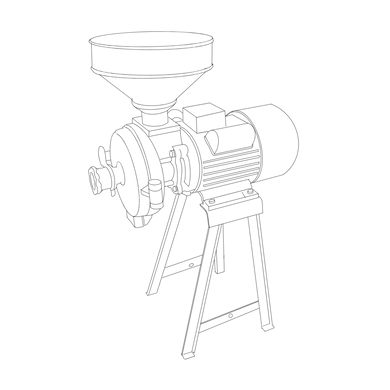
II
cork grinding with
grinding mill
cork grinding with
grinding mill

III
binding with bio-degradable binder
binding with bio-degradable binder
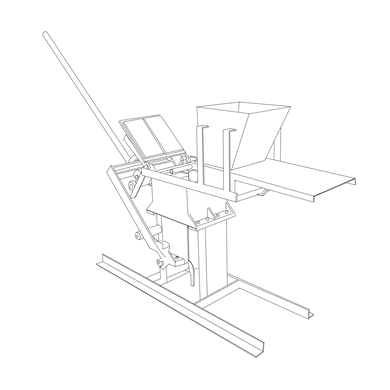
IV
pressing in manual brick machine & drying
pressing in manual brick machine & drying
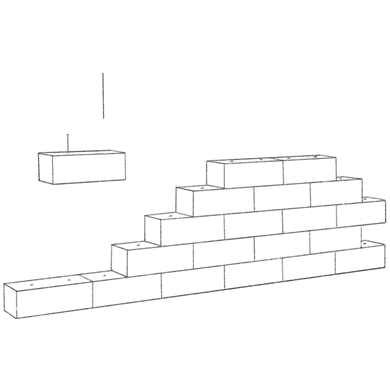
V
cork bricks to build up load bearing structure
cork bricks to build up load bearing structure
The staggered cuboid creates squares. The squares create uc³.
Everything inside uc³ is created by stacked cuboids.
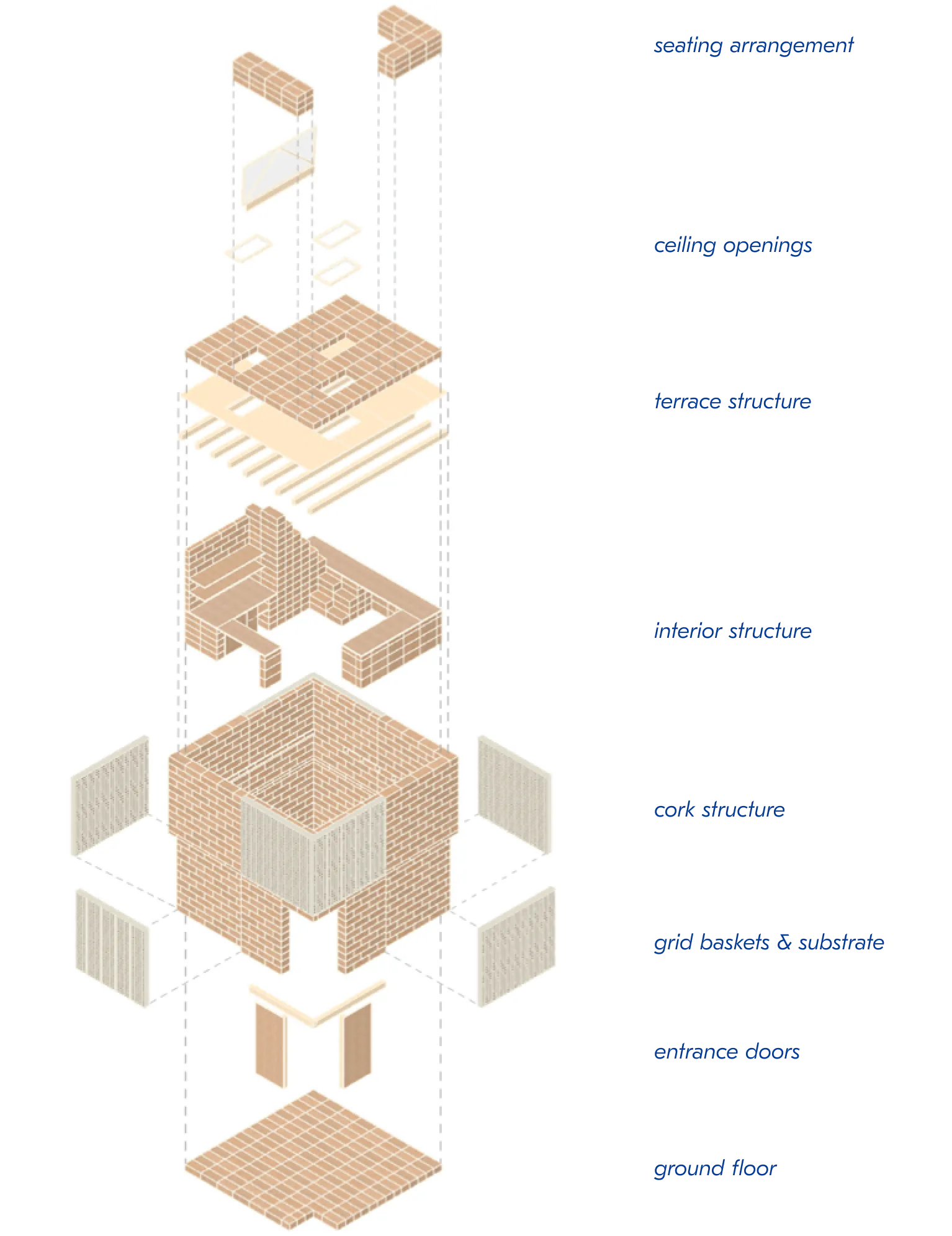
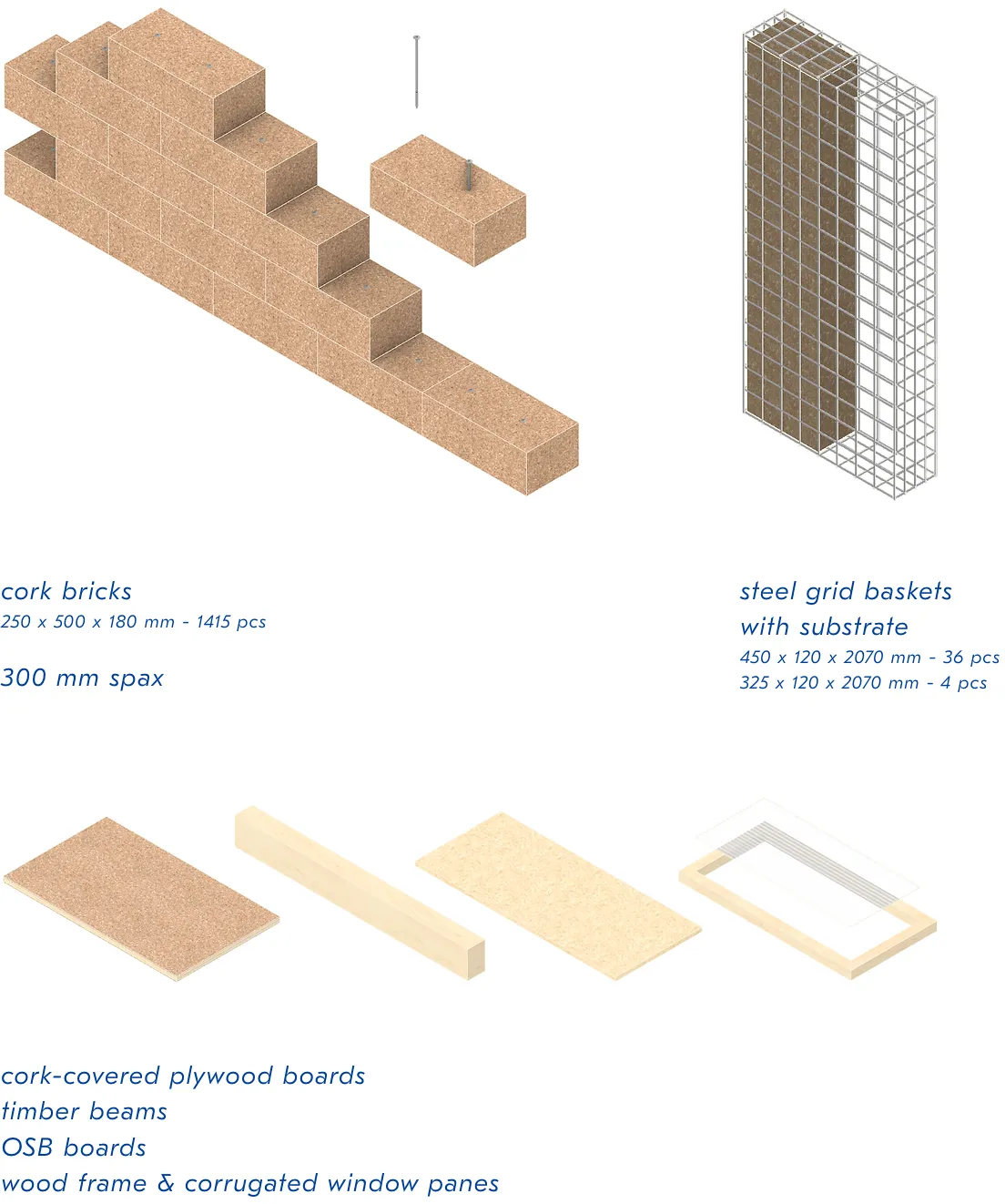
The pavilion can be easily assembled and dismantled by non-professionals, for example as part of a workshop. Simple Spax screws fix the cork bricks together. The steel mesh baskets are reused 'gabions' (usually used as loose stone walls in Germany), fixed with screws and clamps. Additional (reused) timber beams and OSB boards guarantee a securely built second level. The steel grid baskets are filled with a cork-enriched substrate so that a vertical living wall can be created.
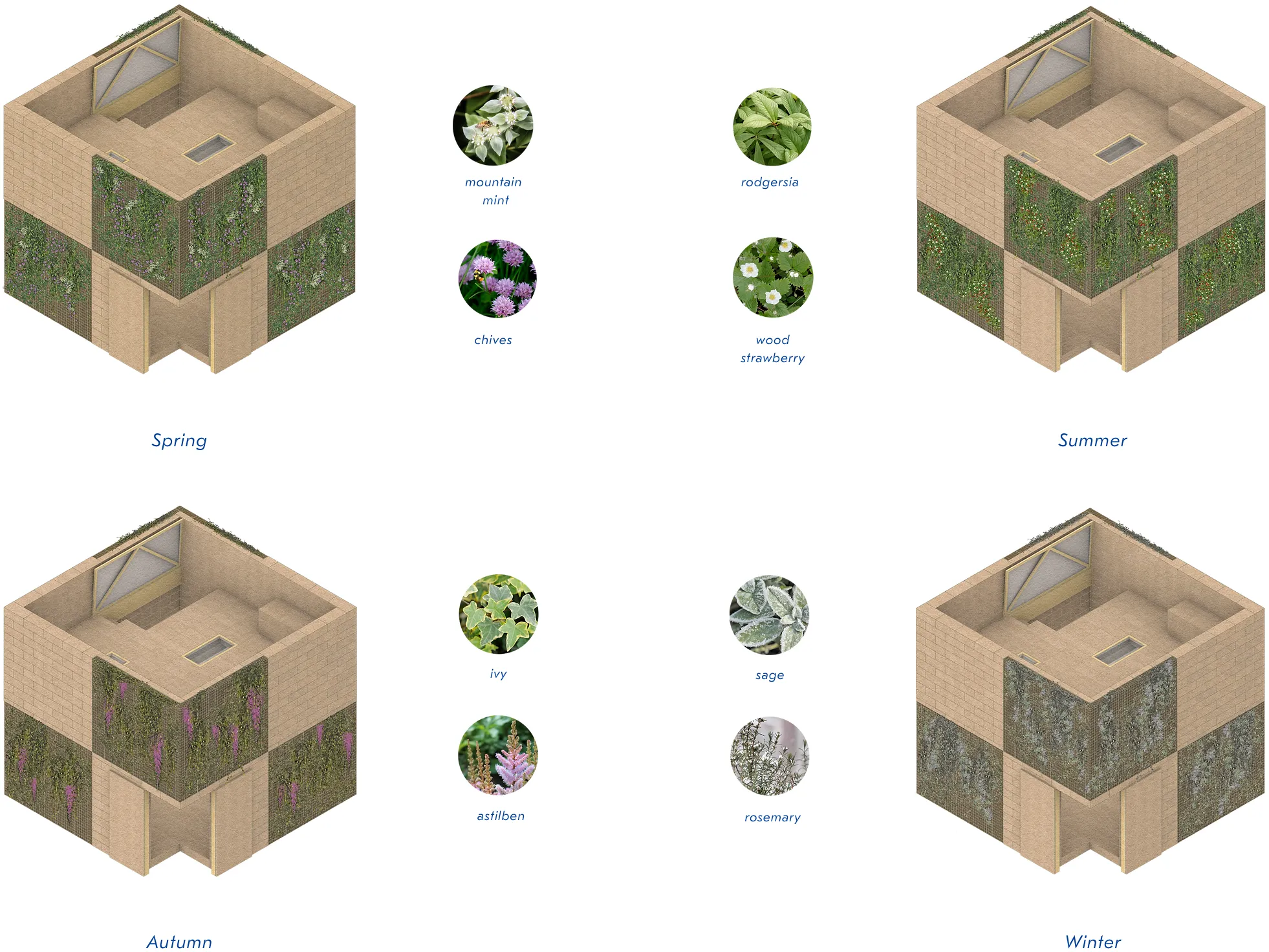
Vertical Gardening | The living wall, supported by the steel grid, adds an extra layer to the cork building experiment of uc³ to keep it useful all year round, not only for humans but also for biodiversity. You can cultivate the vertical garden and be part of a sponsorship system to keep the wall alive and experience the changes of the seasons. | Rhino, Adobe Photoshop
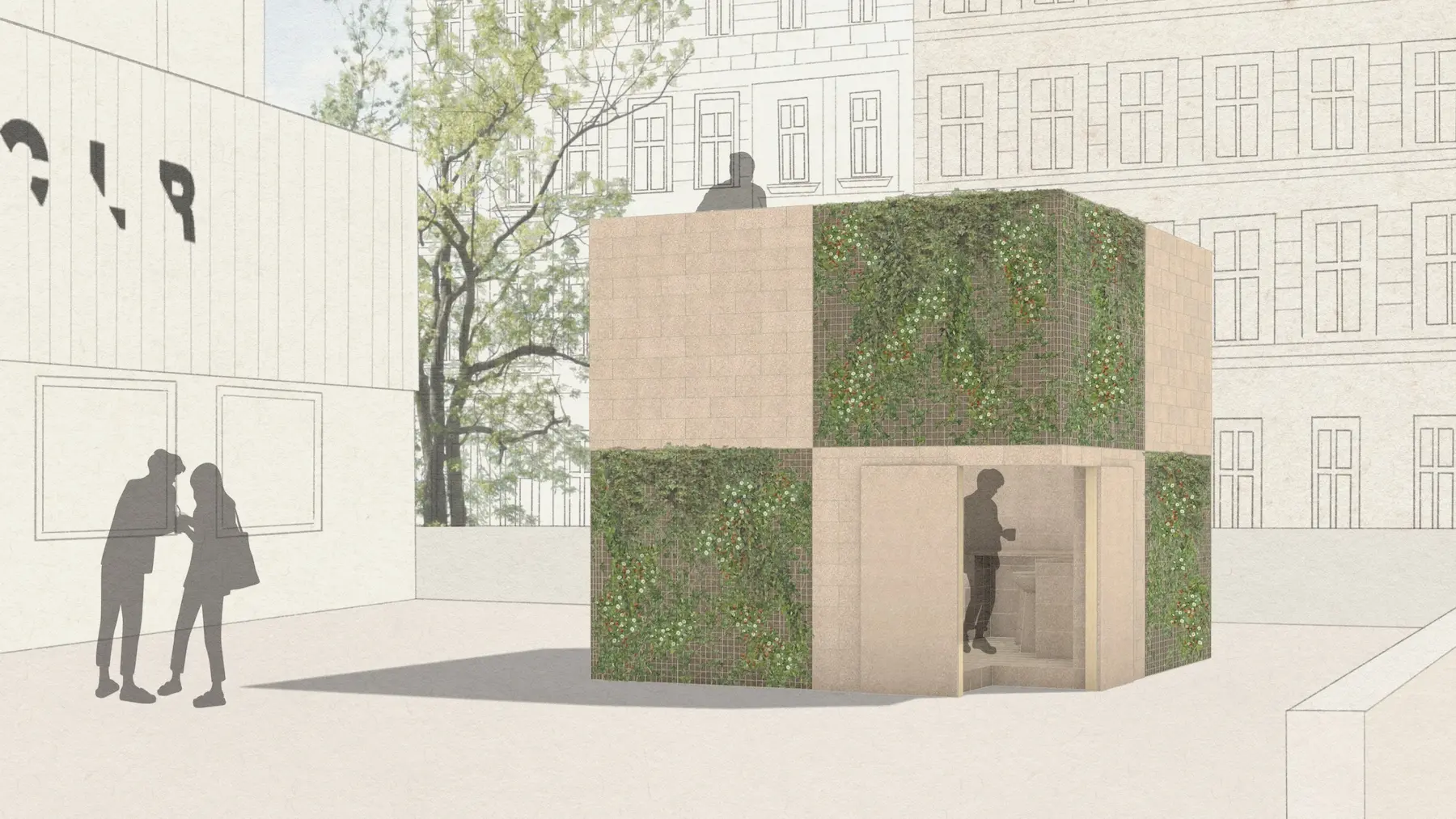
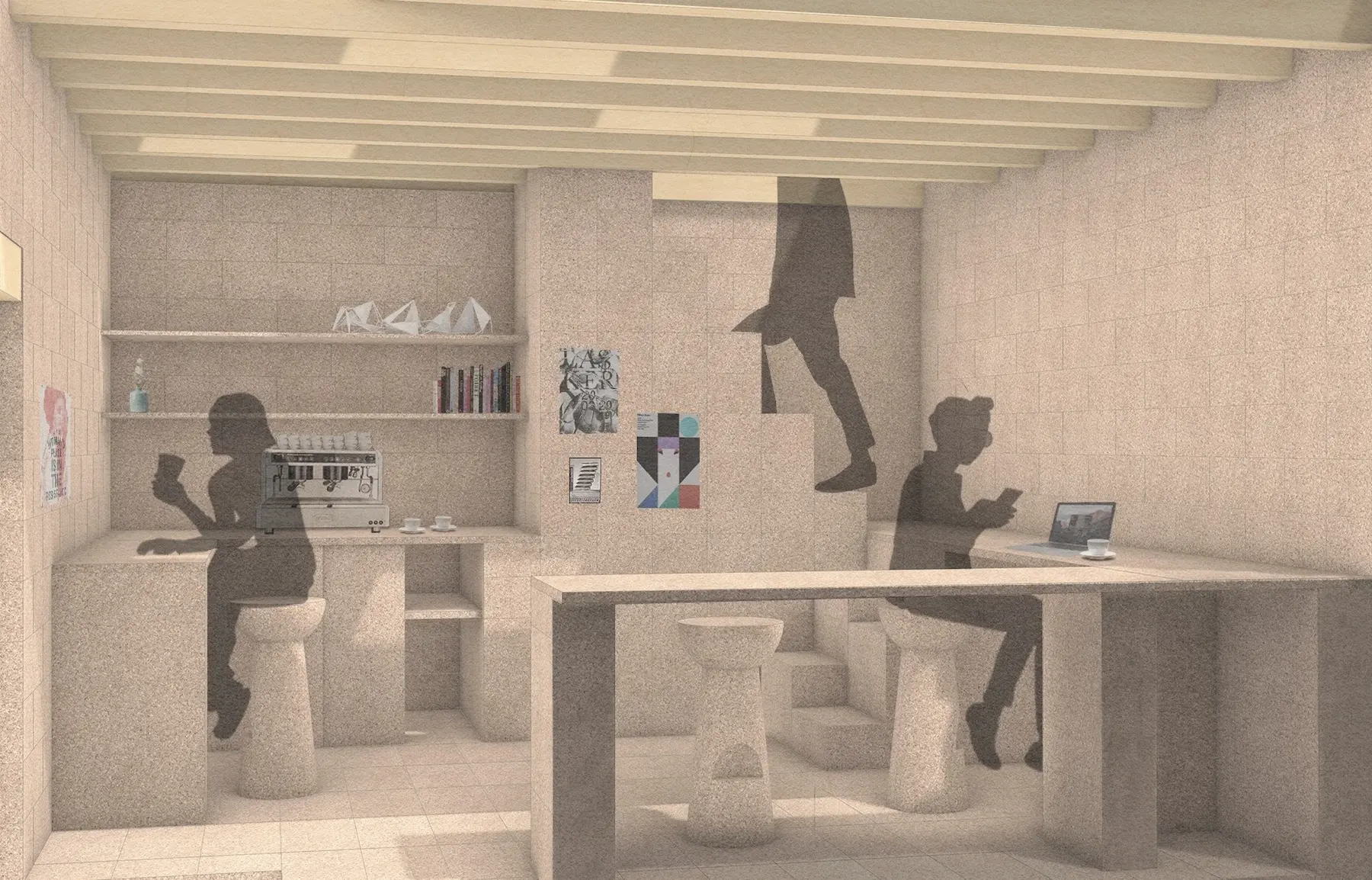
Visuals drafts of the exterior, the roof terrace and the interior of the pavilion. | Rhino, Adobe Photoshop, Procreate


